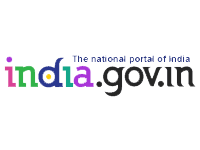DHR-ICMR Advanced Molecular Oncology Diagnostic Services (DIAMOnDS)
1. INTRODUCTION:
Cancer Burden in India: As per the estimates from Global burden of disease initiative 8•3% (95% uncertainty interval [UI] 7•9–8•6) of the total deaths and 5•0% (4•6–5•5) of the total DALYs in India in 2016 were due to cancer, which was double the contribution of cancer in 1990. However, the age-standardised incidence rate of cancer did not change substantially during this period. The age-standardised cancer DALY rate had a 2•6 times variation across the states of India in 2016. The ten cancers responsible for the highest proportion of cancer DALYs in India in 2016 were stomach (9•0% of the total cancer DALYs), breast (8•2%), lung (7•5%), lip and oral cavity (7•2%), pharynx other than nasopharynx (6•8%), colon and rectum (5•8%), leukaemia (5•2%), cervical (5•2%), oesophageal (4•3%), and brain and nervous system (3•5%) cancer.
Breast Cancer: In 2009, breast cancer became the most frequently diagnosed form of neoplastic disease in women in India and is now the most commoncause of cancer death in the country, accounting for more than a fifth of all female cancer mortality. The age-standardised incidence rate of breast cancer increased significantly by 40•7% (95% UI 7•0–85•6) from 1990 to 2016.
Lung Cancer: Tobacco use was the leading risk factor for cancers in India to which the highest proportion (10•9%) of cancer DALYs could be attributed in 2016.Lung cancer is one of the most prevalent cancers and the leading cause of cancer-related deaths. In India, lung cancer constitutes 6.9 % of all new cancer cases and 9.3 % of all cancer-related deaths in both sexes and it is the commonest cancer and cause of cancer-related mortality in Indian men. Lung cancer comprises of two main histologic subtypes: non-small cell lung cancer (NSCLC) and small cell lung cancer (SCLC).
Cancer care services in India: In India, most of the population does not have access to a well-organised and well-regulated cancer care system. A diagnosis of cancer often leads to catastrophic personal health expenditures. Patients with cancer generally have a poorer prognosis in India, because of relatively low cancer awareness, late diagnosis, and the lack of or inequitable access to affordable curative services compared with patients in high-income countries. The value of correct and timely reports of diagnostic and prognostic tests is paramount in selecting right treatment for cancer.
Rational for Establishing Zonal oncopathology Labs: In view of the above scenario, the present proposal aims to set up zonal molecular oncopathlogy labs to provide basic as well as high-end advance diagnostic services to cancer patients and research facilities for basic, translational and clinical research. Along with the diagnosis, these labs will also be performing the research activities very actively as diagnostics and research can go hand in hand in a laboratory set-up. These labs will be named as DHR-ICMR Advanced Molecular Oncology Diagnostic Services (DIAMOnDS).
Aim and objectives of the DIAMOnDS project:
- Encourage and strengthen diagnostic research in the field of oncology.
- To provide free of cost oncopathology diagnostic services to cancer patients.
- Bridge the gap in the infrastructure which is inhibiting poor cancer patients in availing cancer diagnostic services by establishing DHR-ICMR Advance Molecular Oncology Diagnostic Services (DIAMOnDS) lab facilities with a view to improving the diagnostic services in the field of oncopathology.
- To ensure the geographical spread of oncopathology diagnostic services, in order to cover un-served and under-served cancer patients.
- To improve the overall health status of the population by creating evidence based application of diagnostic procedures/processes/methods through research.
2. IMPLEMENTATION PLAN: These laboratories may be established in Medical institutions/Government Medical Colleges that will ensure the optimum utilization of facilities available there, in terms of equipment and manpower and will also provide the much required diagnostic services to the cancer patients in those areas. A two-phase, six step - pilot development model will be followed where following activities will be performed phase wise. These may be scaled up later for the entire country in the form of a research infrastructure scheme and proposed for approval in the 15th Finance commission. Read more..(915.39 KB)




















